Religions for Peace Youth Media Team Interviews Ms. Merylene Chitharai about the Manresa 2022 Forum
“It is Action that Drives Us to Hope”
Ms. Merylene Chitharai, a member of the Youth Media Team and Religions for Peace South Africa, works as a graphic artist, 3D designer and architectural technologist with 15 years of experience in the realm of social and sustainable architecture. This has been driven by her passion for social and environmental justice and is sustained by her written engagement with newsprint and social media. As a faith inspired spiritual eco-activist at heart she has created the Religions for Peace Interfaith Youth Climate Forum and is engaged in various interfaith youth climate programmes.
Agathe Sagne: What motivated you to create the Religions for Peace Interfaith Youth Climate Forum (RfP-IYCF) in South Africa?
Merylene Chitharai: I had been an instrument in creating The Religions for Peace Interfaith Youth Climate Forum (RfP-IYCF), by winning the 2018 Religions for Peace International Youth Peace Prize. The forum was born out of the Our Earth, Our Responsibility Campaign which was initiated by Religions for Peace Global Interfaith Youth Network.
When you observe and reflect on the climate crisis it becomes very easy to criticise, blame the other, become despondent and to sit in anger, judgement and depression. My interfaith work with Religions for Peace began nine years ago in 2013 and I have learnt that people of faith are people of heart, people of vision, people of wisdom and intellect because we are doing the Divine’s work and so our superpower is love because we see the world differently and we can change the narratives. This has been the motivational driving force with our interfaith youth climate work in Durban, South Africa. Instead of focusing on anger and feeding into the negative energy and negative narratives, we have been focusing on the positives. Through this passion, positivity and love for the earth, its creatures and humanity we stay motivated to be this hope of positive climate action. The Religions for Peace-IYCF Mission Statement has been One Earth, One humanity and therefore it is Our Responsibility.
Agathe Sagne: What are the concrete actions the Religions for Peace-IYCF forum has made so far?
Merylene Chitharai: The Religions for Peace-IYCF campaign aimed to educate, engage and advocate, to spread awareness on climate change through positive community projects. We aimed to educate the youth and community at large, by showing how to translate this awareness into climate action through various creative and fun activities.
Our Religions for Peace-IYCF forum incorporated and engaged in many action plans namely:
- Education: Climate change educational talks, educational school programmes, interfaith climate dialogues and eco-workshops on learning to care for the earth and animals through various religious scriptural teachings. We encouraged learning of specific plants and trees that we can propagate to counteract the effects of climate change for example the vertiver grass and spekboom. We tried to create a different kind of holistic educational system.
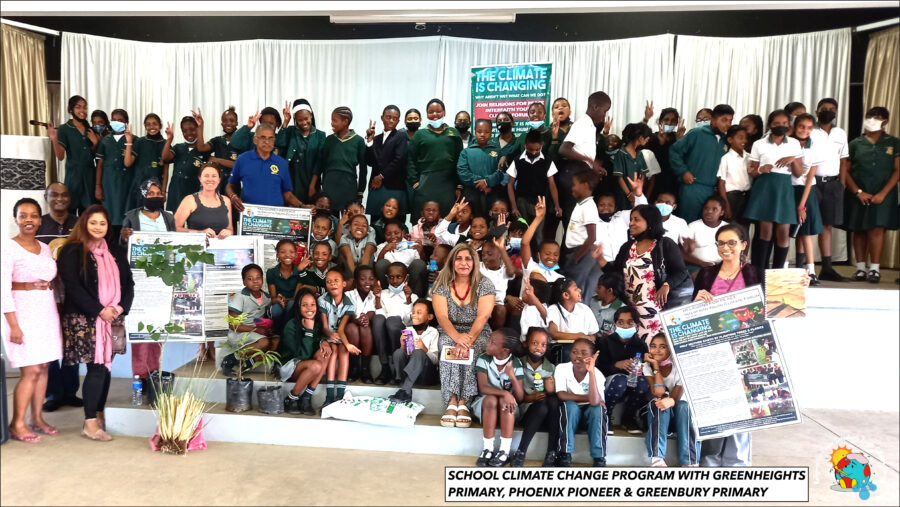
- Spirituality: Interfaith prayers and Earth Meditation. The Earth Meditation helps us to improve the connection between humanity and planet Earth, by offering love, light, gratitude and positive energy to people and Mother Earth.
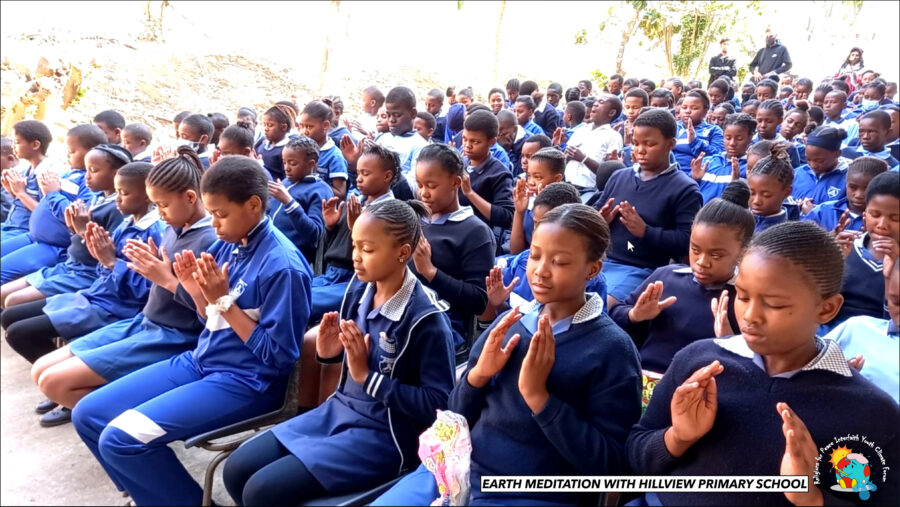
- Community Service and food security: Beach clean-ups, planting trees and creating organic vegetable gardens. We also had partnership programs on learning how to make compost. These organic vegetable gardens were created to feed the community and youth at schools.
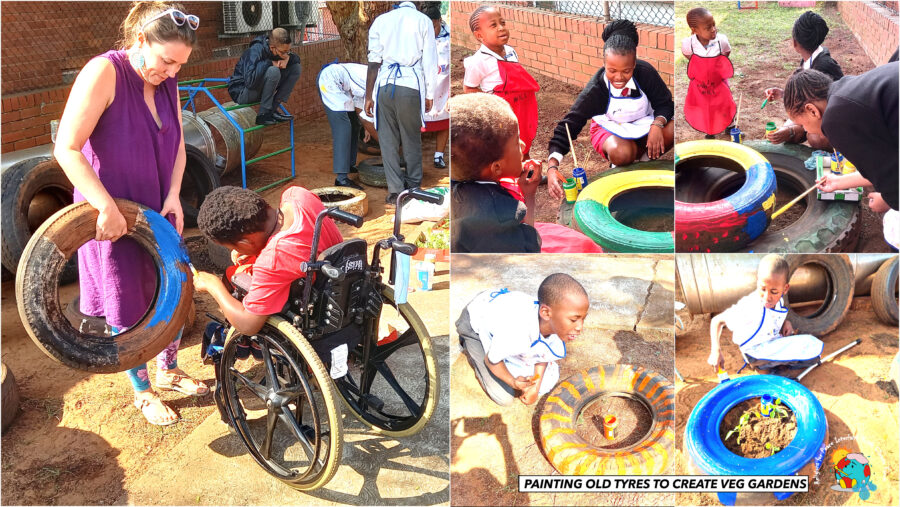
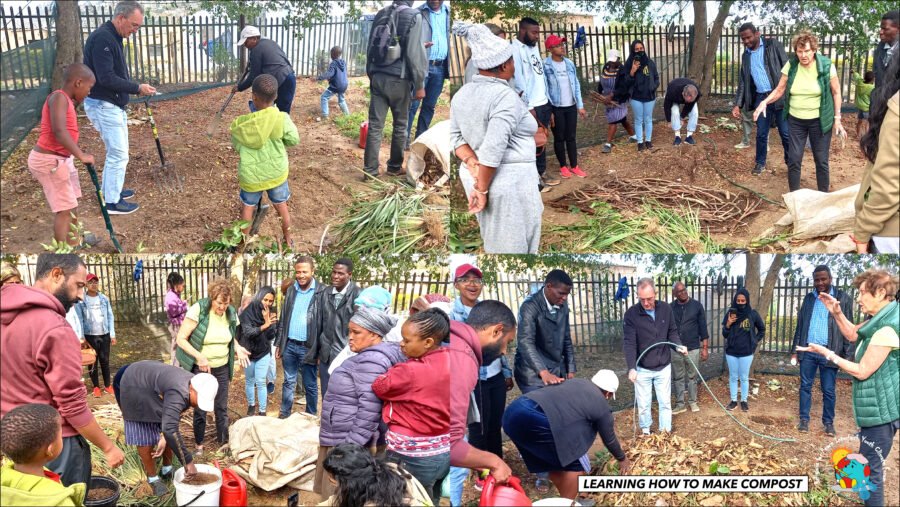
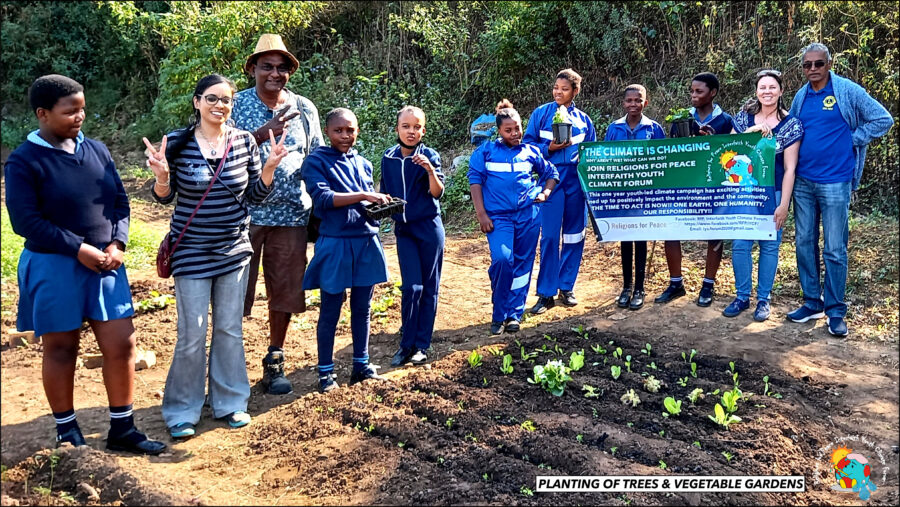
- Activism: Social media engagement, climate marches challenging policy makers about climate matters and promoting petitions and veganism.
- Creativity: Creative learning through fun activities like art, creative writing, cooking, song and dance.
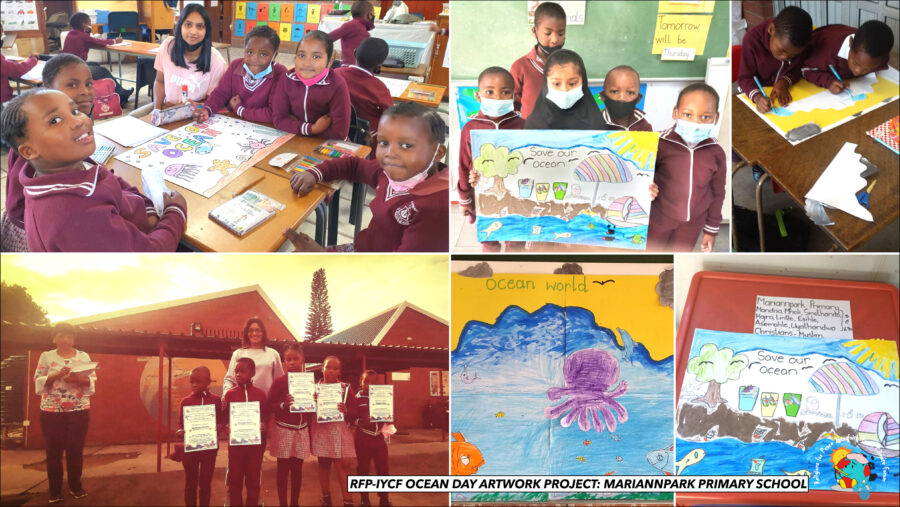
- Multi-faith intergenerational partnerships: Being inclusive, working together with youth, seniors and various organizations to build interfaith partnerships and friendships, showing multi-faith solidarity. Our programs have been in partnership with various organizations, to name a few, Religions for Peace SA, Greepeace Africa Durban local group, The Habitat Foundation, The Lions Club Durban Host, WESSA, 360.org, The Phoenix Gandhi Development Trust etc.
- Social Media and Networking: We also use Social Media Apps as a form of networking and to provide hope to inspire people, motivate and mobilize people into action. We live in a digital age and people are always on social media platforms glued to their phones. Social Media, as a tool used in a positive way has the power to create a positive climate narrative. Our Youth Climate Blog, was recognized by SAFCEI (Southern African Faith Communities’ Environment Institute) as a psycho-social healing response to help the youth and community to the recent KZN floods that we had experienced earlier this year that has led to 400 deaths.
Our forum has only been able to achieve its aim through the many hands that has come together to help and I sincerely thank each and every person that has helped and contributed to this forum. This video shows our past activities from 2019 till 2021:
Visit our pages to find out more about our recent work.
Agathe Sagne: Why is the Religions for Peace-IYCF forum so focused on climate education?
Education, continuous learning and spreading the right kind of knowledge has been our driving force. As Nelson Mandela said: “Education is the most powerful tool which you can use to change the world.” It can break our negative cyclic patterns, behaviors and unconscious actions on the earth by creating an eco-consciousness. Recently Religions for Peace-IYCF participated in The Festival of Alternatives in Durban by conducting a workshop called Youth Capacity Building: Train the trainer: Social Media and Interfaith Eco-workshop. Teachings from various faith were shared to deepen our connection to the Earth with Eco-knowledge. This eco-workshop was based on resource materials from the book Religions for Peace, Resource Guide on Climate Change for Religious Communities. The workshop ended with learning basic social media & documentation skills to promote our climate work in a positive way and to share messages of hope and positivity. Our faith traditions, our spirituality and religious scriptures are rich in deep knowledge. It teaches us valuable lessons about living in harmony with the earth and shows us how everything is inter-connected.
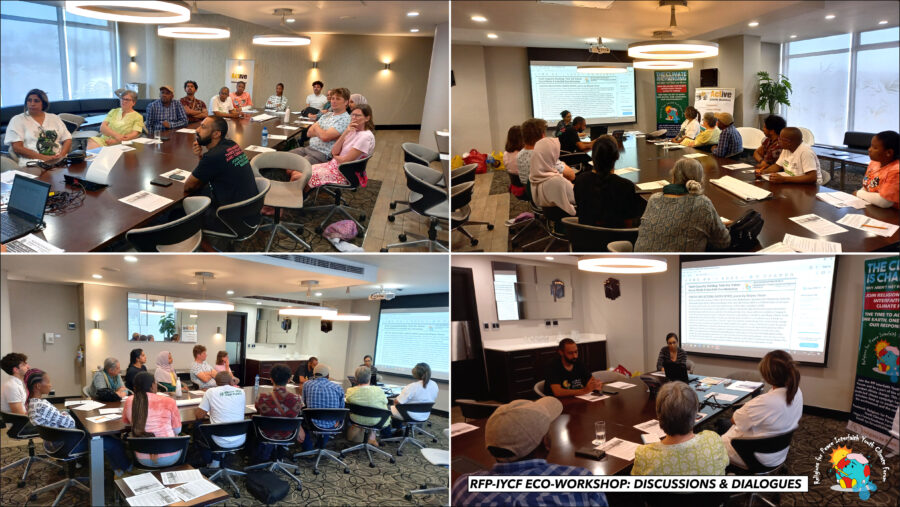
Agathe Sagne: How do you think young people voices are heard and their actions recognised on environmental issues?
Merylene Chitharai: Many youth in Africa and globally recognise the urgency of the climate crisis and are working in whatever way they can to help their communities and environment. They are coming out more to have their voices heard so that world leaders and policy makers hear their pleas to change their ways towards the Earth. Climate change is a result of our unconscious actions on the earth and we have collectively as a human family created this mess and this burden on the earth and so its everyone’s responsibility to clean it up. And we have to try collectively in whatever small way we can, whether it is at grassroots levels by changing our daily behavior and lifestyles or whether its challenging policy makers at a national or global level. Young people are now standing in their power as a leaders to be that example of hope and positive change.
In our forum, we create a space for the youth by focusing on empowering them because they are the present and future leaders and agents of change. Nurture and cultivate their potential, empower them and they become eco-leaders and eco-warriors of love, resilience, courage and compassion. These are the type of leaders, the world currently needs.
Agathe Sagne: Do you think youth are consulted enough in decision making matters regarding environmental issues?
Merylene Chitharai: Generally in civil society and at a policy level, it doesn’t feel like youth are consulted enough in important decision making environmental matters. But as more youth stand out to make their voices heard through their climate work, it feels that they are being considered. I was recently moved by the opening speech youth climate activist, Leah Namugerwa gave at the World Leaders Summit at the UN Climate Change Conference (COP27), calling world leaders to action. In Religions for Peace, youth are consulted and recognised as an inclusive solution to climate matters. At the upcoming conference in Manresa, “At a Crossroads: A Multireligious Intergenerational Response to the Social & Environmental Crises,” the inclusivity of youth has been recognised in the planning of the conference from the very start and the forum will emphasise the importance of engaging youth to create and nurture sustainable, just, and inclusive cities.
Agathe Sagne: What are your parting climate remarks?
Change starts with us, as Mahatma Gandhi said, “Be the change you wish to see in this world” and it will create a movement of positive change. It will create a different world and reality. We are currently living in a world of past negative unconscious actions on the Earth and so the conscious actions we do today will create a different and better future, one with hope and positivity. Positive change starts with small acts of love and care. Change happens in small steps. If we had to measure each small positive act, it creates a positive change collectively in the bigger picture. You can be that change of hope that drives positive action that will benefit the whole of humanity.
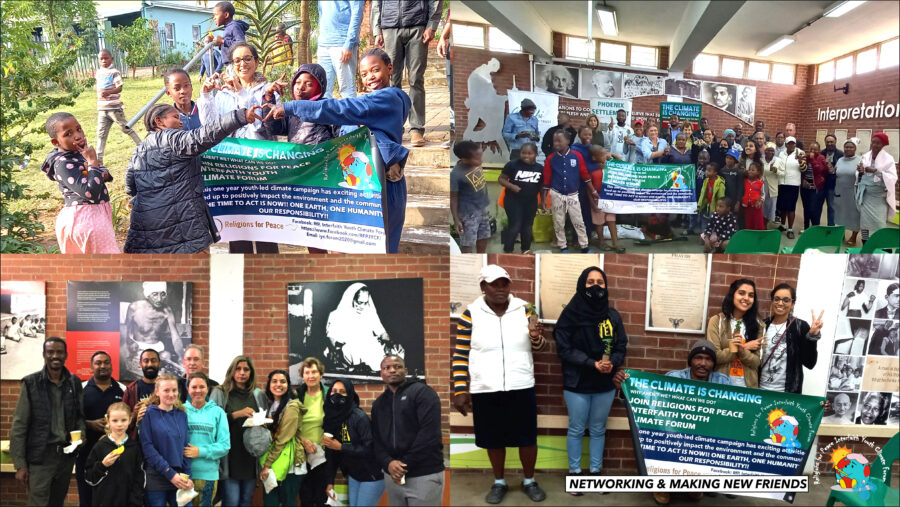
For more information on the upcoming “At a Crossroads: A Multireligious Intergenerational Response to the Social & Environmental Crises” forum and to register, click here.